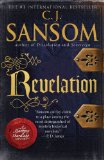Summary | Excerpt | Reviews | Beyond the book | Read-Alikes | Genres & Themes | Author Bio

Though Andrew Taylor's riveting novel is billed as a mystery infused with a ghost story, it is considerably more literary than it might appear. The plot concerns the investigation of a murder and a ghost, but all of the characters are haunted by something - regret, failed ambition - and it is around these "hauntings" that the story revolves. As John Holdsworth investigates the oddities of Sylvia Whichcote's death, it is clear that this novel is wrestling with larger issues: Is it possible to escape the pain of the past? And how do past disappointments blind you from seeing the truth of the present? These piquant questions have broad applications as each character struggles to determine what they should hide or reveal.
The characters jump off the page, but perhaps the most absorbing aspect is the book's setting. Taylor plunges the reader into 1780s England, a world divided by class and smudged with dirt. The details about dress, architecture, and interior design feel perfect, and it is clear that Taylor knows exactly what he is doing with time and place. Much historical fiction is brought down by poor dialogue, because if this important element is off-key, the authenticity of the writing crumbles, creating an uncomfortable reading experience - but the syntax, diction, and cadence of dialogue in The Anatomy of Ghosts is delightfully executed.
At the center of the novel is John Holdsworth, a poor bookseller recovering from a family tragedy. He is hired as a detective on the strength of his lucid argument against the presence of spirits in the eponymously named pamphlet "The Anatomy of Ghosts". His decision to write this treatise came out of his own frustration watching his wife's obsessive attempts to contact their dead son. Ironically, this small project that helped him make some sense of his wife's irrationality ends up being the catalyst that changes his life.
Holdsworth is an unlikely sleuth, preferring the solace of books over the pressures of solving mysteries. He soon realizes, however, that solving this mystery may be a way to salve his own disappointments. He discovers that the ghosts of his past are everywhere: Frank Oldershaw reminds him of what it felt like to be a father, and the lovely (and married) Elinor is faintly reminiscent of his own wife. As he delves deeper into the confusion at Cambridge, he learns that he is actually meeting his own demons.
Just as Holdsworth struggles with his past, so do the other characters. The circumstances around Sylvia's death are changeable based on perspective and bias. Each of the characters believes that they play one role only to discover that what they think isn't always true. The result is a chessboard of moveable pieces and evolving views, one that requires a cool head to unravel. The solution is satisfying, albeit slightly predictable. For readers looking for a nuanced, spellbinding whodunit, this is not the best choice. The strength of The Anatomy of Ghosts lies in its characterization and historical setting. The mystery will keep the pages turning, but the characters will haunt you long after you've finished reading.
![]() This review was originally published in The BookBrowse Review in February 2011, and has been updated for the
February 2012 edition.
Click here to go to this issue.
This review was originally published in The BookBrowse Review in February 2011, and has been updated for the
February 2012 edition.
Click here to go to this issue.

If you liked The Anatomy of Ghosts, try these:

by Antonia Hodgson
Published 2014
Thrilling new historical fiction starring a scoundrel with a heart of gold and set in the darkest debtors' prison in Georgian London, where people fall dead as quickly as they fall in love and no one is as they seem.

by C.J. Sansom
Published 2010
Spring, 1543. When an old friend is horrifically murdered, Shardlake promises his widow to bring the killer to justice. His search leads him to both Archbishop Cranmer and Catherine Parr – whom King Henry VIII is wooing to become his sixth wife - and the dark prophecies of the Book of Revelation.
Your guide toexceptional books
BookBrowse seeks out and recommends the best in contemporary fiction and nonfiction—books that not only engage and entertain but also deepen our understanding of ourselves and the world around us.